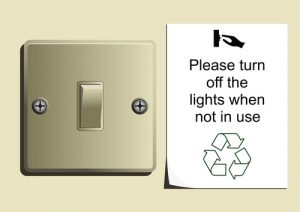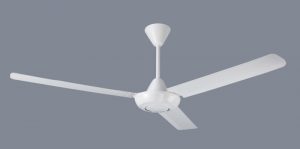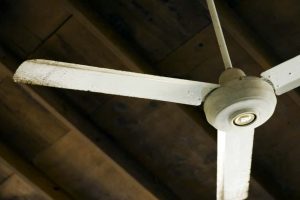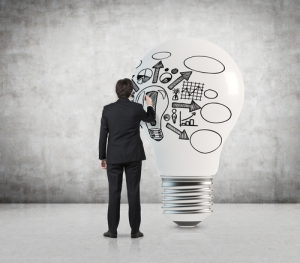Energy Efficient Pumps can help residential complexes save on electricity bills
India is a rapidly urbanizing country. It is expected to be 40% urbanized by 2030. With increasing urbanization, number of high-rise residential complexes is increasing. In many urban centers, local municipal corporations provide water through their pipeline network and pumps are used to push the water stored in overhead tanks. With increasing heights of the residential complexes, the electricity requirement for pumping is increasing by every day. All this is pushing the already shoestring budgets of residential complexes higher. All this makes for a very good case for residential societies to think about energy efficient pumps that can save them some money on their electricity bills.
How much does pumping contribute to electricity bills in a society?
We at Bijli Bachao did some audits and calculations at our own complex to find out how much does pumping contribute to common expenses in our residential complex. And we found out that about 50% of the electricity bill was for the pumping requirements in the complex. Most buildings have only 3 major heads for electricity consumption: lights, elevators and pumps out of which lights are the smallest component and pumps consuming the highest. Thus a residential society trying to reduce their electricity bills should first target pumps to save their electricity bills.
Efficiency in Pumps
Efficiency of any appliance is defined to rate its capability of converting electricity into some form of energy. Every pump is designed to handle certain load at which it has the most optimum efficiency (called as BEP or Best Efficiency Point). Most efficient (small) pumps have efficiencies of 50-70% (if operated at BEP). If a pump is oversized it will not give the most optimum efficiency even if the most efficient pump is used. If the pumps are not designed properly and also not maintained properly, their efficiency can go down up to 10-20%. This means it will use much more electricity to pump the same amount of water to a certain height than it should.
Projects where energy efficient pumps have successfully helped societies
IIEC‘s(International Institute of Energy Conservation) Mumbai Energy Alliance did a project with 12 residential societies in Mumbai to test effectiveness of energy efficient pumps and following results were observed for 3 societies:
- Society 1 (Krishna – Godavari): The pump system efficiency was improved from 30% to 45% with an investment of Rs 50,000. The annual electricity savings were 1619 units (or kWH) with a payback of about 5 years.
- Society 2 (Aditya-Anirudh): The pump system efficiency was improved from 14% to 52% with an investment of Rs 20,000. The annual electricity saving were 1528 units (or kWH) with a payback of 2 years.
- Society 3 (Shiv Ganga): The pump system efficiency was improved from 22% to 37% with an investment of Rs 30,000. The annual electricity saving were 1277 units (or kWH) with a pay back of 3 years.
Please note that the sample above is outcome of an experiment. Every society will have a different requirement as the efficiency of the existing pump may vary; also the size of pump required may vary (as each building is of different height).
What should residential societies do when electricity bills are high?
Most residential societies only look at options for efficient lighting when their electricity bills are high. Doing efficient lighting is great at it does help reduce some amount in the electricity bills, but if pumping efficiency project is taken along with it, the whole project can show a big impact. In case the electricity bills of your society are high, try following:
- Get a simple audit done where you can identify electricity consumption by component: lights, lifts and pumps. Note that single-phase meters are available in the market that can be used with a single pump to identify its unit consumption while in operation.
- If it is identified that pumps are consuming a lot of electricity, hire a certified engineer who can help identify existing efficiencies of the pump and also suggest the right size for the pump based on load requirement.
- Always buy a BEE certified energy efficient pump (as you can get 55-60% efficiency).
- Try using a Variable Speed Drive pump which adjusts it’s consumption based on the load on it.
- Make sure that the pumps are maintained regularly so that they operate at right efficiency.
Principal Agent Problem
Builders build most residential complexes and the actual residents do not care much about the appliances installed in the complex when they purchase their house. As efficient pumps are expensive, many builders do not have financial motive to install efficient pumps. This results in higher electricity costs for the residential complexes when they are transferred to the owners. The common expenses such as electricity bill is divided amongst each house and thus every owner bears the cost of extra electricity that is used for pumping. Thus it is very important that buyers become aware of this fact and demand for more energy efficient products from the builders. Unless that is done, the cost of retrofitting efficient appliances will always be much more and delay in replacing will cost higher electricity bills
About the Author:
Abhishek Jain is an Alumnus of IIT Bombay with almost 10 years of experience in corporate before starting Bijli Bachao in 2012. His passion for solving problems moved him towards Energy Sector and he is keen to learn about customer behavior towards Energy and find ways to influence the same towards Sustainability. More from this author.






